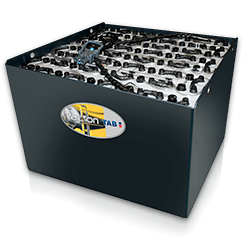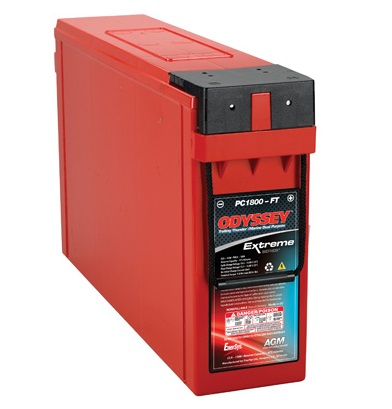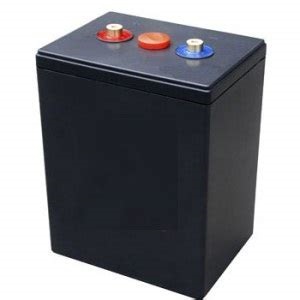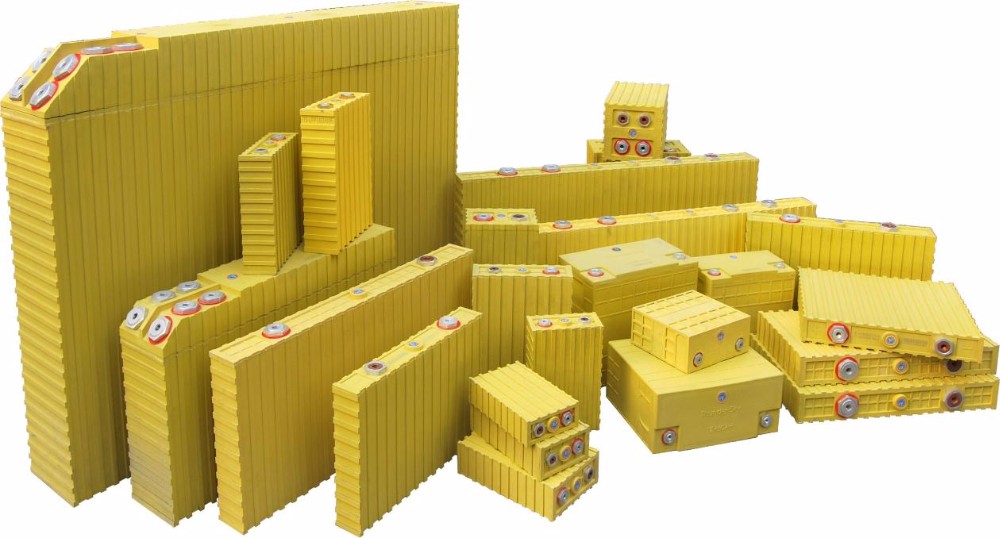
Battery Types
There are many different battery types in use today, all designed for different applications. This article focuses on those of interest for a Hybrid Marine Propulsion System.
Hybrid Marine's parallel hybrid system can charge any type of battery. The system incorporates a four-stage charging algorithm when operating in generate mode. It includes the inputs necessary to connect an external Battery Management System to control both the Charging and Discharging of the battery by the hybrid system. The Victron Invertor Chargers supplied as part of our systems also have these capabilities, ensuring that the whole system can work with any battery technology, both now and in the future.
Flooded (wet) Lead Acid Batteries

These is the so-called "milk float" or "forklift truck" batteries, but they find use in many industrial and traction applications. The Flooded lead acid battery is a very mature technology offering known performance a good life time and an excellent price- performance ratio and is our standard solution for all systems except seagoing boats.
Wet cells generate Hydrogen and Oxygen during charging, which has to be correctly vented for safe operation and will require regular topping up with deionised water to maintain the electrolyte levels in the battery.
When correctly maintained, Flooded Lead Acid batteries offer excellent performance and are ideally suited to the Hybrid Propulsion system. We have systems with batteries over 10 years old still in use.
|
"Maintenance-free" Lead Acid Batteries

These Batteries are sometimes called "Sealed", but technically, they are all Valve Regulated Lead Acid (VRLA) batteries. Although the basic chemistry of a VRLA battery is the same as other Lead Acid batteries, the difference is that the electrolyte is retained in the cell by being absorbed into a glass Mat ( Absorbed Glass Mat - AGM) or as a Gel (Gel Battery) and so cannot spill if the battery is tipped up, or in some cases mounted on its side (see manufacturers data sheet) This property means that AGM and Gel batteries are commonly used in seagoing and sailing boats to avoid battery acid spills.
These batteries are generally designed to be maintenance-free and do not require the electrolyte topping up like Wet cells. This is achieved by recombining the Oxygen and Hydrogen generated during charging back into water inside the cells. During charging, the gasses are held under pressure inside the cell, and there is a valve that will release this pressure if it exceeds the battery's design limits. Once the gas has been vented from the cell, it cannot be replaced, leading to the battery drying out and eventually becoming unusable. It is essential to manage the charging of this type of cell carefully to minimise water loss and ensure excessive charge currents or voltages do not damage the cells.
AGM and Gel cells are generally more expensive than the equivalent Wet Cells and offer shorter lives. They also have significant charging limitations, which can limit their use in high-power applications.
|
Lead Acid Variations

Although Lead Acid batteries are a mature technology, there are continuing innovations in improving the design. Recently, Lead Carbon batteries have been in the news, claiming to offer improved partial charge and discharge performance in a VRLA format.
Lead Carbon batteries are more expensive than Flooded cells but offer the advantage of being maintenance-free. These batteries are another VRLA variation and must be charged with care to avoid excessive gassing, and ventilation requirements must be carefully considered.
Although some impressive claims have been made about the life expectancy of these batteries, they have not yet been around long enough for this to be proven in the field, especially in a hybrid system. Hybrid Marine does not currently recommend lead-carbon batteries.
|
Lithium Ion Batteries

Lithium Ion batteries have become widely available in recent years as they have been adopted in portable battery-powered technology such as phones and are used in Electric Vehicles. There are a number of differing chemistries used under the banner of "Lithium" or "Lithium Ion" batteries, and these offer different energy densities. The higher the energy density, the higher the price and the more volatile the battery becomes. (think of exploding smartphones, for example).
|
Lithium Iron Phosphate Batteries

In a marine environment, the safety of the battery is paramount; no one wants a battery fire while sailing offshore or in any boat that is also your home, so this generally means using metal-cased batteries or selecting Lithium Iron Phosphate (LiFePO4 or LFP) chemistry which is regarded as being stable and safe in most circumstances.
LFP batteries offer size and weight savings over lead acid, but this is not generally an advantage in heavily ballasted canal boats. LFP batteries are maintenance-free and can be left partially charged without affecting their long-term life. However, these advantages come at a cost, with an LFP system being at least double the cost of an equivalent Lead acid system.
|
| Hybrid Marine can supply LFP batteries as part of a system, but in most cases where weight is not a consideration, Lead Acid is still the most cost-effective solution. |
Regeneration >








